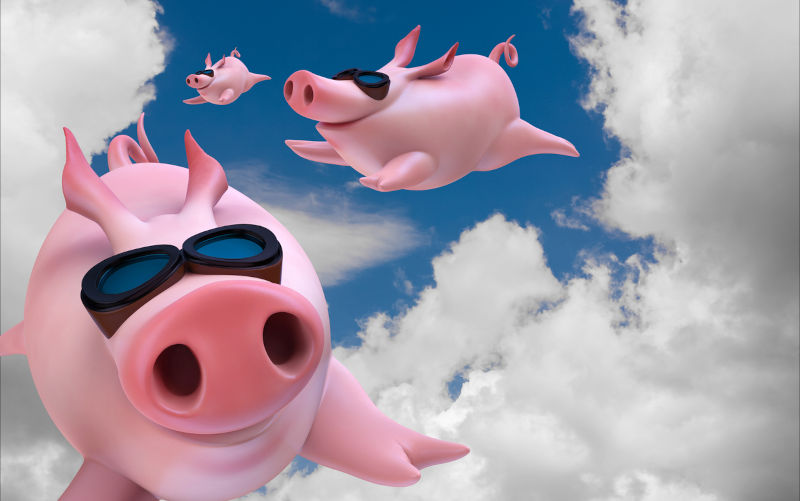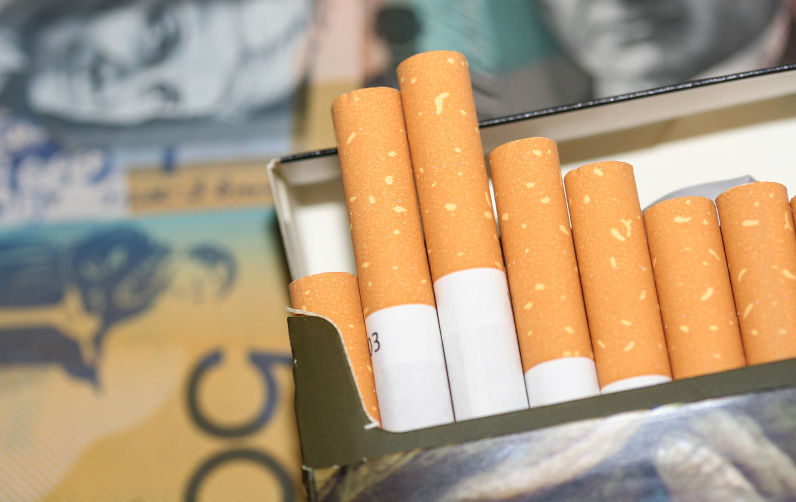Lowering tobacco tax to make illegal tobacco sales 'disappear overnight': At last we have a proposed figure and it’s an absolute doozie
August 26, 2025
Last week Ross Fitzgerald wrote a piece here titled Time to get real on taxing cigarettes and restricting vapes.
I scoured the piece for the key information that any Treasury official would need on how to “get real” and advise the government what sort of tax cut would do the trick and make duty-paid cigarettes competitive with illicits. These can be bought today for as little as $8 a pack. But all I found was Ross advising that Australia needed to “start reducing” tobacco excise. It’s that simple, apparently.
Here’s a reality check for those who think it’s just that simple, and for those who’ve been bold enough to name a reduction level.
Australian smoking rates have never been lower in adults, school kids, low socio-economic groups, and First Nations people. That’s a good thing, right? These outcomes represent the results of decades of policy reform and government campaigns. But these bottom lines mean little to fringe critics of Australia’s approach to tobacco control, who are licking their wounds after failing badly to stop the government from regulating vapes to allow then to be sold in as many retail situations as possible.
Then there those who passionately believe that expensive, highly-taxed cigarettes are a cruel impost on low-income earners. For several years, in pitch perfect unison with Big Tobacco which has lobbied for decades to keep tobacco tax low to sell more cigarettes, they argue that the government should lower tobacco tax to make it easier for them to afford to smoke. Could there be any more truly perverse way to help the poor?
Illicit tobacco has been widely available in Australia for more than 25 years, long before the significant rises in tobacco tax began in 2012. These critics also never mention the inconvenient truth that large black markets for tobacco exist in most countries, including those where tobacco tax is much lower than in Australia. So plainly, there is far more to understanding illicit tobacco markets than tax alone.
The widespread, blatant proliferation of duty-not-paid dirt cheap tobacco has excited these critics. Barely a week goes by when they are quoted on what the government needs to do, and “lowering” tobacco tax is always front and centre of the mantra.
But as I’ve noted before, it’s one thing to call for tax to be lowered, and quite another to draw on your expertise to help the Treasury know exactly where the magic sweet spot reduction should fall to make smokers who are now buying cheap illicits go back to duty-paid cigarettes. James Martin and Alex Wodak fudged naming a date or percent reduction in a Crikey piece when urging “reducing tobacco excise to undercut the illicit trade”. So OK gents, how much of a reduction are you talking about?
But all rejoice! The wait is now over!
In recent weeks, critics have put their hands up with several figures. In June, Harm Reduction Australia published an unsigned Tobacco Harm Reduction Policy Brief, presumably with the fingerprints of its tobacco harm reduction advisers, Alex Wodak and James Martin.
The short document recommended this:

So there’s the level: lower the tax rate back five years to that we had in 2020. That will fix things, right?
Or we could go back another year to 2019 when tobacco tax was still lower. In a very uncharacteristic slip, ABC economics expert Alan Kohler, snuck this final line into an otherwise very sensible commentary on the black market: “The other thing the federal government could do is reduce the tobacco excise back to what it was before 2019, which would lead to a huge increase in revenue.” An increase presumably explained by droves of smokers abandoning illegal cigarettes for the newly competitively reduced-tax legal ones.
Or according to Kingsley Wheaton, chief corporate officer for British American Tobacco, who flew out to Australia in June to talk about the “basic economics” of tobacco tax, this should involve a “ reversion to the 2018 (tobacco tax) rate”.
And then we come to the really heavy duty ordinance, this time from Australian economist Steven Hamilton, a professor at George Washington University. Quoted in _The Saturday Paper_, in April “So my suggestion would be that there is one solution and one solution only, and it is to radically reduce the rate of tax on cigarettes. Take the tax rate on cigarettes back to where it was 10 years ago, make legal channels competitive, and the black market will disappear.” Disappear! It’s that easy! Ten years ago — in 2015 — tobacco tax was $0.53096 and a packet of 20 budget cigarettes cost $24.28 (see table 13.3.3 here)
OK, so let’s take one of these named years — 2019 — and do the simple early high school arithmetic on how dropping tax back seven years would go in demolishing the black market.
In 2019, excise tax on cigarettes per stick was $0.81775 (in March) and $0.96653 (in September) – see Table 13.6.2 here. This means that the tax component in 2019 of a pack of 20 was either $16.335 or $19.3306. For retail price, we need to add GST and the manufacturers’ and retailers’ margins (see chart below for the current proportions) to see what a legal pack of 20 cigarettes would retail at under the new retro tax regime proposed by our disappearing black market pundits.

So let’s show this for a typical budget brand in the chart.
Excise 73.9% = $16.34
GST 9.1% = $2.01
Retail mark-up 8.1% = $1.79
Manufacturer mark-up 8.9% = $1.97
Total retail price: $22.11
Here’s a conversation between two smokers:
Bill: Hey, the government has dropped tobacco tax big time! You can get a pack of 20 now for just over $22.
Bob: Really? I can buy my smokes at cheap smokes shop for as low as $10 a pack, sometimes as high as $20 in high income suburbs. So these new reduced tax smokes are still more than double the lowest price of the dodgy ones. Why would I be mad enough to pay out all that extra?
That common $10 smokers can now pay for illegal cigarettes is clearly still highly profitable for those selling them. It is anyone’s guess how much even lower their price could fall and still retain acceptable profitability. After first publishing this blog, I was told of $8 packs of 20 being sold in Muswellbrook in rural NSW, presumably still making a profit for all in the chain. So the above sums are likely conservative about how much tax would need be lowered to get prices on par or cheaper than illicit cigarettes.
So this heroic step would do absolutely nothing to solve the problem.
It is just gobsmacking that people positioning themselves as credible advisers on how to undercut the black market could not have asked this most basic and fundamental of all questions about their magic reductions. And equally, that so many journalists have let them blather on and never questioned it. A _Sydney Morning Herald_ editorial in June stated without blinking “a tax rethink on tobacco excise is self-evident and common sense”.
The tax cut to 2015 levels proposed by Hamilton goes closest to a nominal sweet spot. But If the government were to put the tax down to 2015 levels then the prices of taxed products would only be competitive with the current illicit prices if Big Tobacco and all retailers also selflessly reverted to what they charged back in 2015. Yeah, that’s really going to happen. Pigs might fly too.

Enforcement of the weapons-grade penalties now in place across the country, together with turning attention to landlords who are knowingly allowing tobacconist tenants to use their rental premises to break the law are the obvious ways to go, as Alan Kohler also emphasised.
First published on my blog Simon Chapman AO, on 7 August, updated 9 August 2025
The views expressed in this article may or may not reflect those of Pearls and Irritations.
